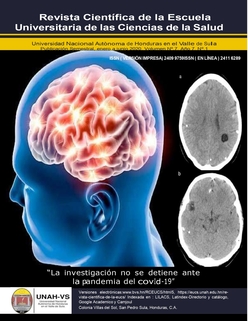Pulp pathologies frequency in children who attended unah dental school, tegucigalpa, Honduras
DOI:
https://doi.org/10.5377/rceucs.v7i1.10944Keywords:
Dental caries, Dental pulp, PulpitisAbstract
According to the World Health Organization (WHO), between 60 and 90% of the child population has carious lesions with cavitation. Pulp pathologies are a consequence of the evolution of dental caries or trauma, manifesting with pain, inflammation or infec- tion, which forces patients to go urgently to the dental office with reversible, irreversible pulpitis or pulp necrosis. Depending on the pathology severity, it can be intervened through curative therapies and when it has reached a very advanced level, the only op- tion is extraction, leaving short, medium and long-term sequelae in the child.
Objective: To analyze the different pulp pathologies in deciduous molars of child patients between 5 and 9 years old who attend the Pediatric Dentistry clinic of the Faculty of Dentistry of the National Autonomous University of Honduras (UNAH) during 2016-2018.
Patients and Methods: Descriptive, retrospective and quantitative study. Medical records were collected from children between 5 and 9 years of age who attended between 2014 - 2016 with a sample of 310 records from a universe of 1605.
Results: Pulp pathologies predo- minated in the male gender (54.2%). Dental caries was the most recorded etiology (77.34%), reversi- ble pulpitis predominated (9.3%), the most affected dental organ, in the FDI (Federation Dentaire Inter- national), nomenclature system, was the left lower deciduous first molar (7.4). The most performed treatment was pulpotomy (15.2%).
Conclusions: In children, untreated dental caries evolved mostly to reversible pulpitis.
Downloads
2201




